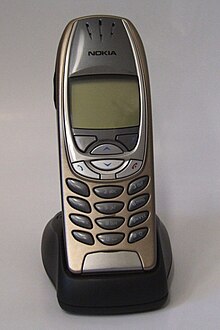
The Nokia 3410 is a mobile phone made by Nokia, the successor of the popular Nokia 3310. It was announced at CEBIT on 12 March 2002. The 3410 was the first Java phone by Nokia, as well as being one of the earliest mobile phones outside Japan to feature 3D graphics and an image editor. The Nokia 3410 was never released in the Asia-Pacific region, likely due to variants of the 3310 such as the Nokia 3315, which featured almost the same design cues as the Nokia 3410, as well as Nokia observing tetraphobia in Asian markets where the number four is viewed as unlucky.

The Nokia 6230 is a mobile phone based on the Nokia Series 40 platform. It was announced on 28 October 2003 and released in February 2004.

The Nokia 6600 is a smartphone introduced on 16 June 2003 by Nokia, costing approximately €600 when released in October 2003. It was Nokia's high-end model of the 6xxx Classic Business Series. At the time of release, it was the most advanced product ever launched by Nokia, and it runs on Symbian OS 7.0s. It also featured a VGA camera, a music player and video player, Bluetooth and extended storage by memory card, being the second non-Communicator to do so.
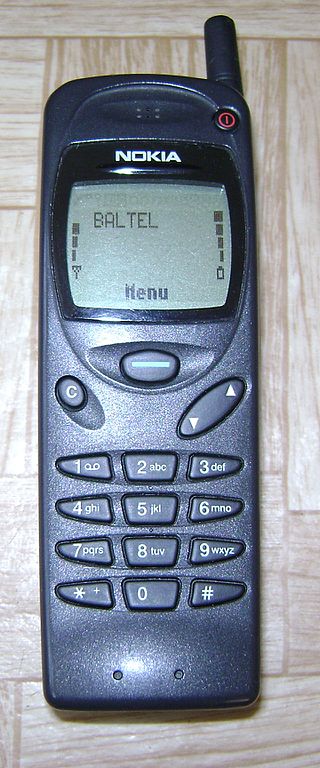
The 3110 is a GSM mobile phone handset manufactured by Nokia in Hungary, introduced at CEBIT in March 1997. The 3110 is notable as the first Nokia handset to feature the 'Navi-Key' menu navigation system. The Navi-Key was featured heavily on Nokia handsets, especially the entry-level models such as the Nokia 1100 in the following years. Unlike its successor, the 3210, and subsequent handsets of similar design, the 3110 had an external antenna. The phone was available with a slim, standard or vibrating battery. It could only be used on a GSM-900 network.
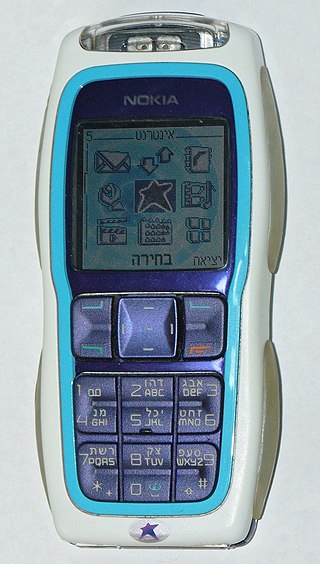
The Nokia 3220 is a GSM, Series 40 mobile phone from Nokia. The Nokia 3220 was introduced on 31 May 2004 as a "fun" device with LED lights and Xpress-on covers. It was the first entry-level phone that offered full access to the Internet, with an XHTML browser and POP3/IMAP email client. The tri-band camera phone uses GPRS and EDGE for its internet connections.

A mobile phone feature is a capability, service, or application that a mobile phone offers to its users. Mobile phones are often referred to as feature phones, and offer basic telephony. Handsets with more advanced computing ability through the use of native code try to differentiate their own products by implementing additional functions to make them more attractive to consumers. This has led to great innovation in mobile phone development over the past 20 years.
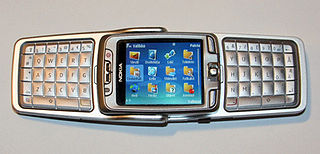
The Nokia E70 is a candybar/fold keyboard-type smartphone from the Eseries range, announced in October 2005 and released in May 2006. There are two models of this phone, the E70-1 for the world market with tri-band GSM and UMTS, and the E70-2 for the Americas with tri-band GSM and EDGE packet data capability. Both models use the S60 platform 3rd Edition on top of Symbian OS version 9.1.

The Nokia 6120 classic is a mid-range smartphone from Nokia that was announced on 17 April 2007. It runs on Symbian v9.2 with a S60 3rd Edition FP1 user interface.

The Motorola MicroTAC is a cellular phone first manufactured as an analog version in 1989. GSM-compatible and TDMA/Dual-Mode versions were introduced in 1994. The MicroTAC introduced a new "flip" design, where the "mouthpiece" folded over the keypad, although on later production the "mouthpiece" was actually located in the base of the phone, along with the ringer. This set the standard and became the model for modern flip phones today. Its predecessor was the much larger Motorola DynaTAC and it was succeeded by the Motorola StarTAC in 1996. "TAC" was an abbreviation of "Total Area Coverage" in all three models.
The Nokia 6000 series or Classic Business series is range of mobile phones marketed by Nokia. This family of phones is notable for their conservative, unisex designs, making them popular with business users.

Nokia 5300 XpressMusic is a slider mobile phone by Nokia, part of the XpressMusic range. It was introduced on 26 September 2006 and released at the end of that year. It runs on Nokia Series 40 3rd Edition FP2.

The Nokia E71 is a smartphone introduced in 8th May 2008 from the Eseries range with a QWERTY keyboard targeting business users worldwide. It runs on Symbian OS v9.2, with a Series 60 3rd Edition, second generation Feature Pack 1. The Nokia E71 succeeded the Nokia E61/61i models, building on the base design and form factor but enhancing on the feature set.
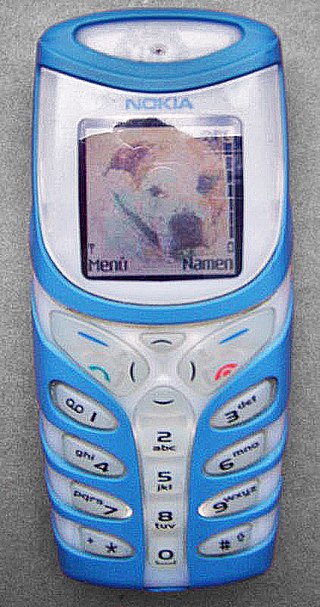
Nokia 5100 is a Nokia GSM mobile phone model that was announced on 4 November 2002 and released in early 2003.
The Nokia 6301, approved by the FCC for the US market in January 2008, is a triband GSM mobile phone. The North American model 6301b is equipped with 850/1800/1900 MHz bands. The European model 6301 is equipped with 900/1800/1900 MHz bands.
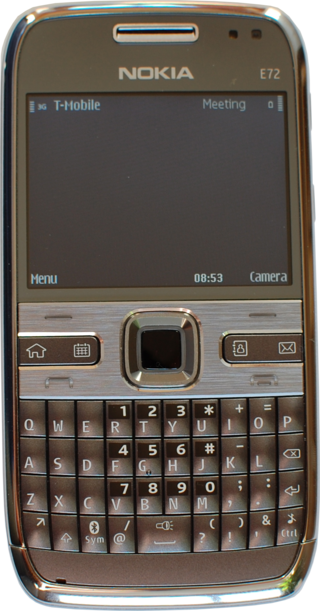
The Nokia E72 is a smartphone from the Nokia Eseries range manufactured in Finland. The Nokia E72 was announced on June 15, 2009 at the Nokia Connections 2009 event in Singapore. It is the successor to the Nokia E71 and is based on a similar design and form factor, and offers a similar feature set. The Nokia E72 is a business-oriented phone and has standard features including mobile email, calendar and instant messaging among many others with its Symbian-based S60 3rd Edition Feature Pack 2 operating system.
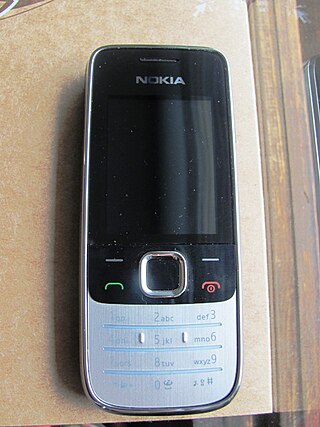
The Nokia 2730 classic is a Nokia Quad-band GSM/UMTS 3G cell phone that includes a camera, FM radio, Bluetooth, music and video player, as well as several internet-based applications.
The Nokia 8810 is a discontinued slider-style mobile phone announced and manufactured by Nokia in 1998. It is notable for being among the first mainstream mobile devices to have an internal antenna, although the very first is regarded as the TCP-6000, released as the Hagenuk GlobalHandy.
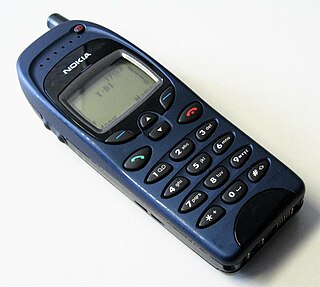
The Nokia 6150 was a mobile phone released in 1998. It was an enhanced version of the Nokia 6110 - 6130: it could support both 900 MHz and 1800-1900 MHz GSM bands. The extra hardware required for dual-band capability made the top side thicker than the 6110. The phone was used in the Mercedes-Benz S-Class (W220), where it was held in a cradle and connected to the car's integrated car phone and media system called COMAND.

The Nokia 6310 is a business-oriented mobile phone announced on 15 March 2001 and released at the end of the year as the successor of the Nokia 6210.
